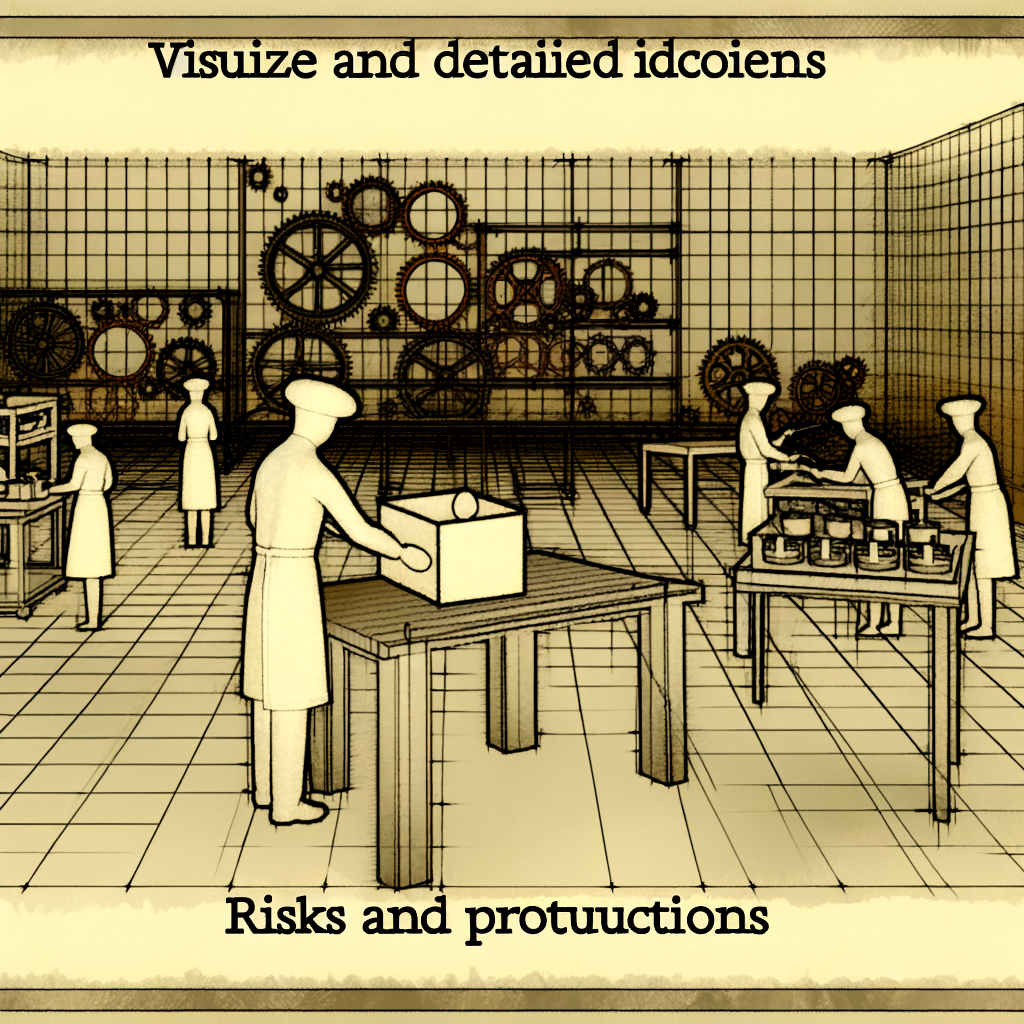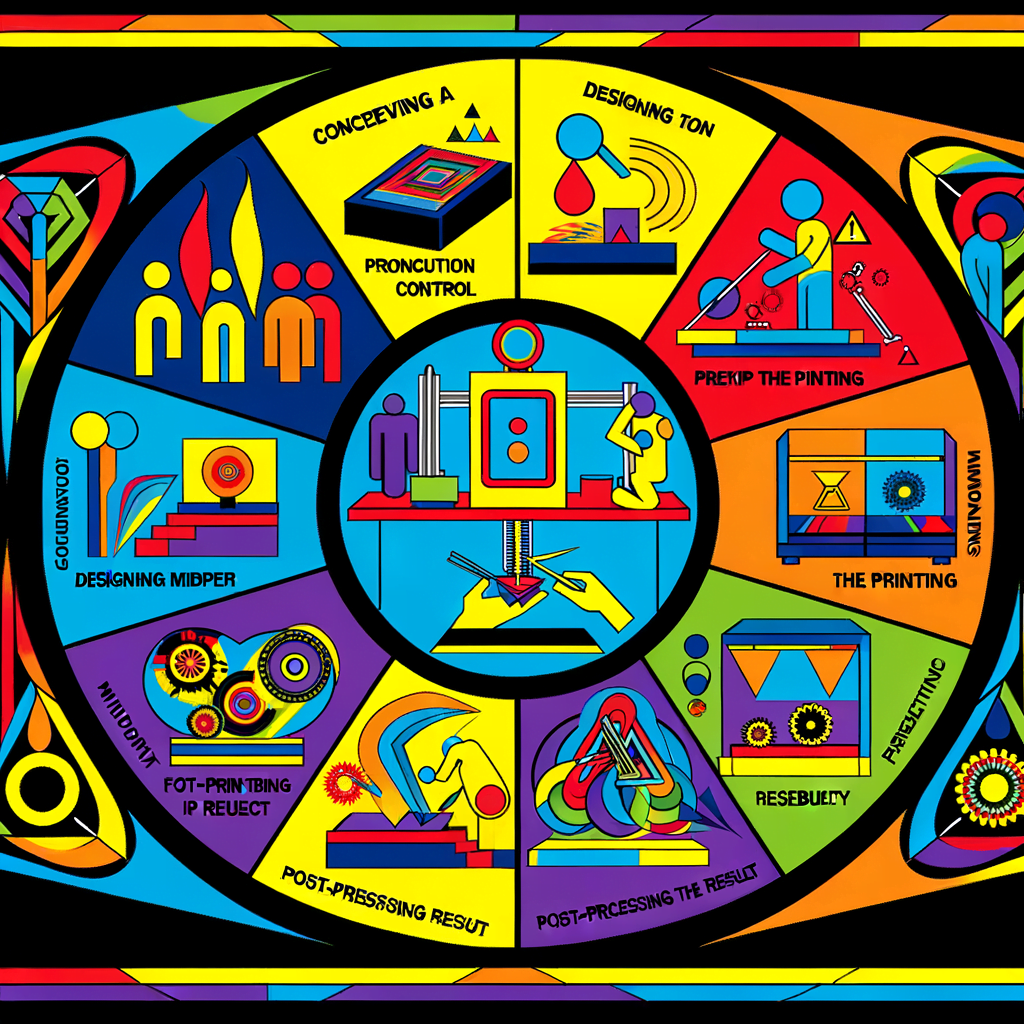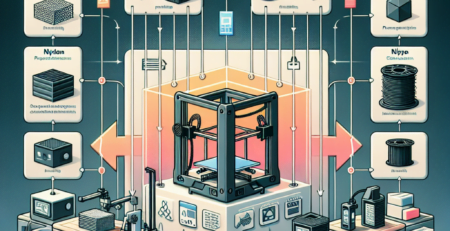Risks and Precautions – Ensuring Your 3D Printing Projects Are Safe from Start to Finish
Tabla de contenido
“Print Smart, Print Safe: Navigating Risks and Embracing Precautions for Secure 3D Printing Endeavors.”
Introducción
3D printing, also known as additive manufacturing, has revolutionized the way we create and prototype new products, offering unparalleled flexibility and customization. However, as with any manufacturing process, it comes with its own set of risks that must be managed to ensure safety throughout the production cycle. From the initial design phase to the final removal of the printed object, it is crucial to be aware of potential hazards such as toxic material exposure, equipment malfunctions, and fire risks. Precautions must be taken to mitigate these dangers, including proper ventilation, use of appropriate personal protective equipment (PPE), regular maintenance of the 3D printer, and adherence to safety guidelines. Ensuring that these risks are understood and managed is essential for the safe and successful completion of 3D printing projects.
Understanding the Hazards: A Guide to Safe Materials and Practices in 3D Printing
Risks and Precautions – Ensuring Your 3D Printing Projects Are Safe from Start to Finish
The advent of 3D printing technology has revolutionized the way we create and manufacture objects, offering unparalleled flexibility and customization. However, as with any innovative technology, it is crucial to recognize and mitigate potential risks to ensure safety throughout the printing process. Understanding the hazards associated with 3D printing is the first step toward implementing safe materials and practices.
One of the primary concerns in 3D printing is the emission of ultrafine particles (UFPs) and volatile organic compounds (VOCs), which can pose respiratory risks if inhaled. These emissions are particularly prevalent when printing with certain thermoplastics, such as ABS (acrylonitrile butadiene styrene). To minimize exposure, it is essential to operate 3D printers in well-ventilated areas or to use printers equipped with built-in filtration systems. Additionally, selecting materials known for lower emissions, like PLA (polylactic acid), can further reduce health risks.
Moreover, the high temperatures required for melting printing materials can lead to burn injuries if proper precautions are not taken. The print bed and extruder of a 3D printer can reach temperatures exceeding 200°C, presenting a hazard to users who may inadvertently come into contact with these components. It is imperative to maintain a safe distance from the printer during operation and to allow it to cool down before attempting any maintenance or removal of printed objects.
Another risk to consider is the mechanical stability of the printed objects. Inadequate printing settings or the use of substandard materials can result in objects that are structurally weak and prone to failure, which can be particularly dangerous if the object is intended for load-bearing applications. To ensure mechanical integrity, it is advisable to use high-quality materials and to adhere to recommended printing parameters, such as layer height and infill density.
The potential for fire hazards should not be overlooked. The combination of high operating temperatures and electronic components means that there is a risk of overheating and possibly ignition. This risk is exacerbated by the prolonged operation times often required for 3D printing projects. To mitigate this risk, it is important to never leave a 3D printer unattended while in operation and to use printers that have thermal runaway protection, which can shut down the printer in the event of a temperature anomaly.
In addition to these physical risks, there are also intellectual property considerations. The ease with which 3D models can be shared and replicated raises concerns about copyright infringement. Users must be diligent in ensuring that they have the right to print and distribute the designs they use and that they respect the intellectual property rights of others.
Finally, the disposal of waste materials from 3D printing must be handled responsibly. Many 3D printing materials are not biodegradable and require proper recycling or disposal to prevent environmental harm. Users should familiarize themselves with the recycling programs available for their specific printing materials and follow local regulations regarding waste disposal.
In conclusion, while 3D printing offers exciting possibilities, it is accompanied by a set of risks that must be carefully managed. By understanding these hazards and taking appropriate precautions, such as using safe materials, maintaining proper ventilation, respecting high-temperature components, ensuring mechanical stability, being vigilant about fire safety, respecting intellectual property rights, and responsibly disposing of waste, users can enjoy the benefits of 3D printing while safeguarding their health, safety, and the environment. As the technology continues to evolve, so too must our commitment to safe and responsible 3D printing practices.
Ventilation and Equipment Safety: Best Practices for 3D Printing Workspaces

Risks and Precautions – Ensuring Your 3D Printing Projects Are Safe from Start to Finish
The advent of 3D printing technology has revolutionized the way we create and manufacture objects, offering unparalleled flexibility and customization. However, as with any technological innovation, it is imperative to acknowledge and mitigate the inherent risks associated with its use. Ensuring safety in 3D printing projects from start to finish requires a comprehensive understanding of the potential hazards and the implementation of best practices, particularly in the areas of ventilation and equipment safety.
One of the primary concerns in 3D printing is the emission of ultrafine particles (UFPs) and volatile organic compounds (VOCs), which can pose significant health risks if inhaled. These emissions are a byproduct of the heating process that 3D printers use to melt plastic filaments or resins. Consequently, proper ventilation is crucial in any 3D printing workspace. It is essential to operate 3D printers in well-ventilated areas, preferably with a dedicated exhaust system or fume extractor that can remove contaminants from the air and direct them away from users.
Moreover, the use of high-efficiency particulate air (HEPA) filters can be instrumental in capturing fine particles, while activated carbon filters can help absorb harmful gases. These filtration systems should be regularly maintained and replaced according to the manufacturer’s recommendations to ensure their effectiveness. Additionally, monitoring the air quality within the workspace can provide valuable insights into the levels of UFPs and VOCs, enabling timely interventions when necessary.
Beyond air quality, equipment safety is another critical aspect of 3D printing workspaces. The high temperatures required for printing can lead to burns if the printer’s hot end or heated bed is touched inadvertently. To prevent such accidents, it is advisable to use printers with enclosed build chambers, which not only help contain emissions but also act as a barrier against accidental contact with hot surfaces. In cases where an enclosure is not available, clear signage and physical barriers can serve as reminders and prevent direct interaction with the equipment during operation.
Electrical safety is also paramount, as 3D printers draw significant power and can be a fire hazard if not handled correctly. Ensuring that the printer is connected to a surge protector and that the electrical wiring is up to code can mitigate these risks. It is also prudent to avoid leaving 3D printers unattended for extended periods, especially when printing with materials that are prone to catching fire.
The materials used in 3D printing, such as ABS, nylon, and certain resins, can also present safety challenges. It is important to handle these materials with care, using gloves and protective eyewear when necessary. Storing them in a cool, dry place away from direct sunlight and heat sources will help maintain their integrity and reduce the risk of spontaneous combustion or degradation that could lead to hazardous situations.
In conclusion, while 3D printing offers exciting possibilities, it is accompanied by a set of risks that must be carefully managed. By prioritizing ventilation and equipment safety, enthusiasts and professionals alike can create a secure environment that fosters innovation without compromising health and safety. Through the diligent application of best practices, the 3D printing community can continue to push the boundaries of what is possible, ensuring that projects are not only successful but also conducted within the confines of a safe workspace.
From Design to Production: Risk Assessment Strategies for 3D Printing Projects
Risks and Precautions – Ensuring Your 3D Printing Projects Are Safe from Start to Finish
The advent of 3D printing technology has revolutionized the way we conceive and fabricate objects, from simple household items to complex components used in various industries. However, as with any technological advancement, it brings a set of risks that must be carefully managed to ensure safety throughout the entire process of a project. From design to production, risk assessment strategies are crucial in mitigating potential hazards associated with 3D printing.
Initially, the design phase is the foundation upon which the safety of the 3D printing process is built. It is imperative that designers possess a thorough understanding of the materials and the printing technology they intend to use. Certain materials can be more prone to catching fire or releasing toxic fumes when heated. Therefore, selecting the appropriate material is not only a question of achieving the desired strength and flexibility but also of ensuring that the material can be safely used within the chosen 3D printing technology.
Moreover, the design itself must be scrutinized for structural integrity. A flawed design can lead to weak points that may cause the object to fail under stress, potentially resulting in injury or damage. Simulation software can be employed to predict how an object will behave under various conditions, allowing designers to make necessary adjustments before the printing process begins.
Once the design has been finalized, attention shifts to the actual printing process. Here, the risks are multifaceted, encompassing both mechanical and environmental concerns. The moving parts of a 3D printer pose physical hazards, particularly in industrial settings where larger machines operate at higher speeds. It is essential to ensure that safety guards are in place and that operators are trained to work safely around the equipment.
In addition to mechanical risks, the printing environment must be carefully controlled. Ventilation is a key factor, as some printing processes can release volatile organic compounds (VOCs) and ultrafine particles that can be harmful if inhaled. Adequate ventilation systems or the use of enclosed printers can help to mitigate these risks. Furthermore, the risk of fire must be addressed by ensuring that printers are equipped with thermal cutoffs and are operated away from flammable materials.
Post-processing activities also present their own set of challenges. The removal of support structures and the smoothing of surfaces often require tools and chemicals that can be hazardous if not handled correctly. Personal protective equipment such as gloves and eye protection should be used, and work should be conducted in well-ventilated areas to avoid exposure to potentially harmful dust and fumes.
Finally, the disposal of waste materials must be considered. Many 3D printing materials are not biodegradable, and some can be toxic. It is important to follow proper disposal procedures to prevent environmental contamination and adhere to regulations regarding hazardous waste.
In conclusion, ensuring the safety of 3D printing projects from start to finish requires a comprehensive approach that encompasses all stages of the process. By carefully selecting materials, rigorously testing designs, maintaining a safe printing environment, and responsibly handling post-processing and waste disposal, the risks associated with 3D printing can be significantly reduced. As the technology continues to evolve, so too must our strategies for managing these risks, ensuring that the benefits of 3D printing can be fully realized without compromising safety.
Conclusión
Conclusión:
Ensuring safety in 3D printing projects requires a comprehensive approach to risk management and precautionary measures. Risks include exposure to toxic materials, fire hazards, electrical safety, mechanical injuries, and the potential for creating unsafe products. Precautions must be taken at every stage, from design to post-processing, to mitigate these risks. This involves using appropriate materials, maintaining equipment, operating printers in well-ventilated areas, using protective gear, and adhering to safety standards. By implementing strict safety protocols and staying informed about the latest safety recommendations, individuals and organizations can significantly reduce the risks associated with 3D printing and ensure that projects are completed safely and successfully.





Deja una respuesta